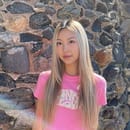Diversity is an inseparable topic in the fashion industry. It includes a wide range of social categories, from style diversity to gender and race diversity. The fashion industry takes the lead in using marketing that respects diversity. With the Christmas campaign, Burberry not only showed its commitment to racial diversity, but the brand also acknowledged the need for a fashion line that satisfies everyone, including Muslim women who choose modest attire. Meanwhile, Dolce Gabbana, Zara, COS, and Mango are among the long list of retailers that have benefited from producing a suitable collection for Ramadan. The photoshoot and runway entry of plus-size models from various brands also contributed greatly to the respect for diversity in the fashion industry.
However, fashion brands still commit various discriminations by showing blatantly offensive themes and images. In prominent cases, Dolce & Gabbana was criticized for being sexist in 2015 for its “gang rape” theme, and in 2018, it was boycotted by showing advertisements that seemed to blatantly mock Chinese culture. It also sparked controversy in 2018 through a campaign by H&M to showcase a black boy wearing the “coolest monkey in the jungle” jumper. Why does the fashion industry keep making sensitive mistakes?
I’m a fashion lover, and at the same time, I’m a fashion hater.
The world of fashion, which should be more diverse and flexible than anyone else, is full of contradictions. Artificial diversity, which is obvious and narrow-minded and has a lot of marketing purposes, rather limits the possibility of fashion. There is nothing more dominant than when fashion gets power. Fashion often becomes very narrow-minded when describing feelings or silhouettes, such as feminine, mannish, and boyish by dichotomously dividing the gender into two ranges. (which makes me feel like the act itself is not fashionable at all!) Also, many fashion shows mix a few colored models on the runway like seasoning, and pretend to present diversity. The same goes for shows with plus-size models. It rather separates the size by introducing skinny models and plus-size models.
I think the hope to meet this lack of diversity in the fashion world could be anti-fashion. Anti-fashion refers to an attitude of rejecting the existing uniformized coercive fashion. It also symbolizes individual fashion and liberalized fashion, that is, it can be said to aim for a lifestyle based on an independent aesthetic that has been dropped out of fashion as a fashion phenomenon. There are so many fashion styles born based on these anti-fashion ideas. In fact, all of the emerging fashion trends can be seen as having an anti-fashion disposition. Anti-fashion challenges the social mainstream.
The dress reform movement in the 19th century could be considered the start of anti-fashion. The dress reform movement freed women from painful corsets, heavy rustling, and long skirts sweeping the disease. During the more radical women’s rights movement, which initially fought for equality from 1850 to 1870, and during the campaign, when women in high-class clubs in social organizations struggled to reform by working within their gender norms, union underwear was touted as a healthier alternative to corsets
Since then, fashion has changed with big and small movements that resist power. The emergence of hippies in the 1960s became the era of the popular anti-fashion with the public. Hippie was used as a counterculture movement to reject mainstream American life. The hippies advocated nonviolence and love. They encouraged openness and tolerance as an alternative to constraints and solidarity seen in middle-class society. They often grew their hair without shaving, wore psychedelic costumes, and pursued spiritual things away from physical and social oppression.
Punk fashion began in the late 1970s in England with fashion designer Vivienne Westwood. It was quickly accepted by disillusioned and disgruntled teenagers. A store named SEX, run by Malcolm McLaren, sold fetishist-focused clothing; leather-bound pants, obnoxious jewelry and T-shirts, and ripped and tainted jeans; other materials used to invoke fetishism were rubber and PVC plastic. Punk clothes were often embedded and cut, and decorated with chains and safety pins. The anti-fashion was adopted in response to the fashion sense shown by fans of bands such as Sex Pistols. The punk style showed how fashion can challenge standards of gender and beauty.
By the 1990s, grunge fashion appeared as a representative of anti-fashion against capitalism. In contrast to high-end fashion, Jiji Fashion preferred functionality and DIY dressing, and paid close attention to the decadence and artificiality of the designer collection. It was a rejection of not only fashion as an industry, but also all the values it embodied: consumerism, materialism, and capitalism. Completely free from the hedonistic excesses of the last decade, it was clearly an anti-fashion, anti-American, anti-American movement.
I think the latest anti-fashion could be sustainable fashion. The climate crisis is getting more and more attention, which is why alternative and sustainable thinking about clothes and fashion is emerging. Several labels have begun to focus on creating sustainable clothing, which means that they are produced in an employer-friendly way and in sustainable material. Used clothes, self-made clothes, and used clothes will soon need to become a fashion trend, and until then, it can be said to be a new and sustainable anti-fashion.
They challenge social norms and standards of beauty. However, this can never fully satisfy the lack of diversity in fashion. This is because fashion created by the spirit of rebellion also becomes a trend, and once again, it creates and dominates norms with power. Nevertheless, fashion continues to resist power, and this is why I can hate and love fashion at the same time.


